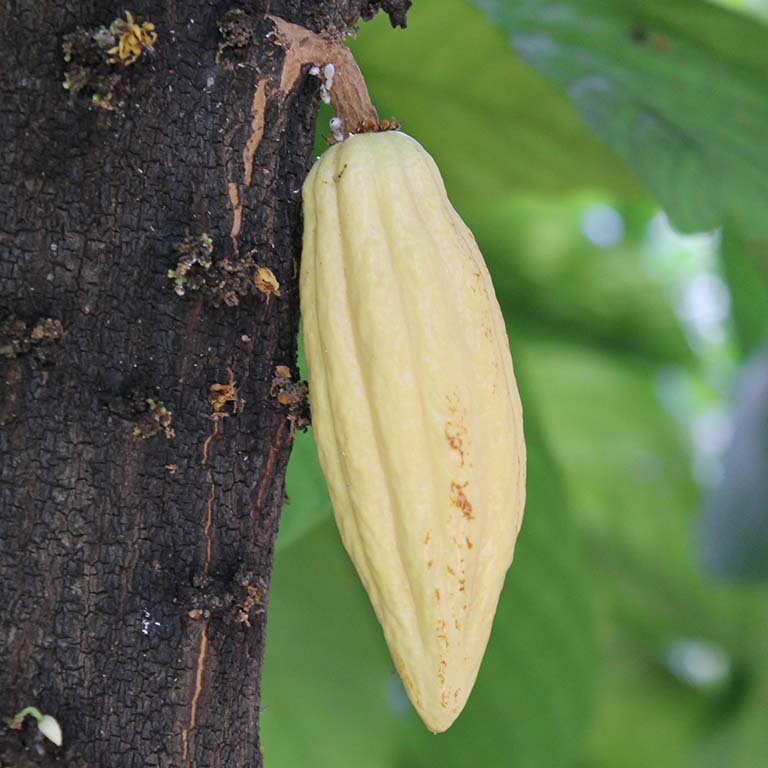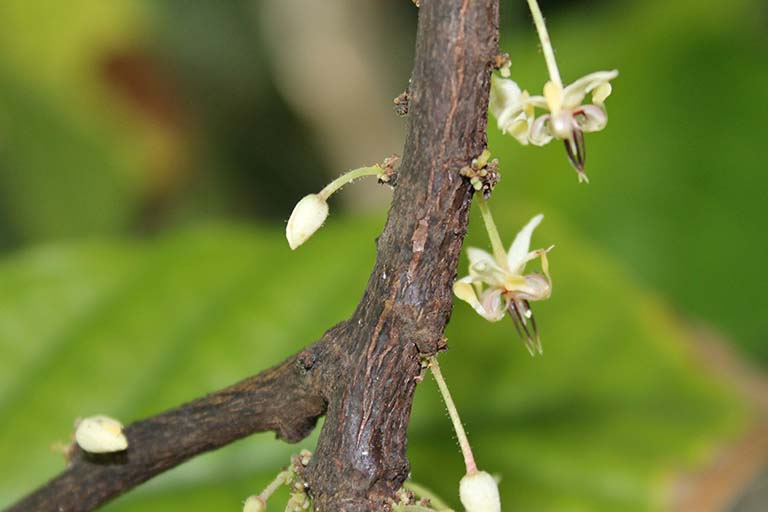Family: Malvaceae
Scientific name: Theobroma cacao
Common name: Chocolate tree
Native of: Tropical Americas
Greenhouse location: Rooms J and P
Family: Malvaceae
Scientific name: Theobroma cacao
Common name: Chocolate tree
Native of: Tropical Americas
Greenhouse location: Rooms J and P

One of the most famous confectionary ingredients in the world—chocolate—comes from the fruits of Theobroma cacao. The tree's flowers are born on the trunk and are very small in comparison to the fruits ("cacao pods") that develop after pollination. When the cacao pod reaches ripeness, it turns a bright orange color similar to pumpkins. A typical pod contains around 35 pulp-covered seeds ("beans").
The seeds and pulp are removed from the rind and left in heaps, put in bins, or spread on grates to "sweat" for several days. The thick pulp ferments, liquifies, and drains away—leaving the beans to be collected and processed. About 400 dried beans are needed to make one pound of chocolate. Around 5 million tons of cocoa are produced annually. The pulp is sometimes saved and used for beverages, extracts, and powders.
T. cacao has a long history with humans—and not just as food. The beans were used as currency in Mesoamerica prior to significant European settlement.


